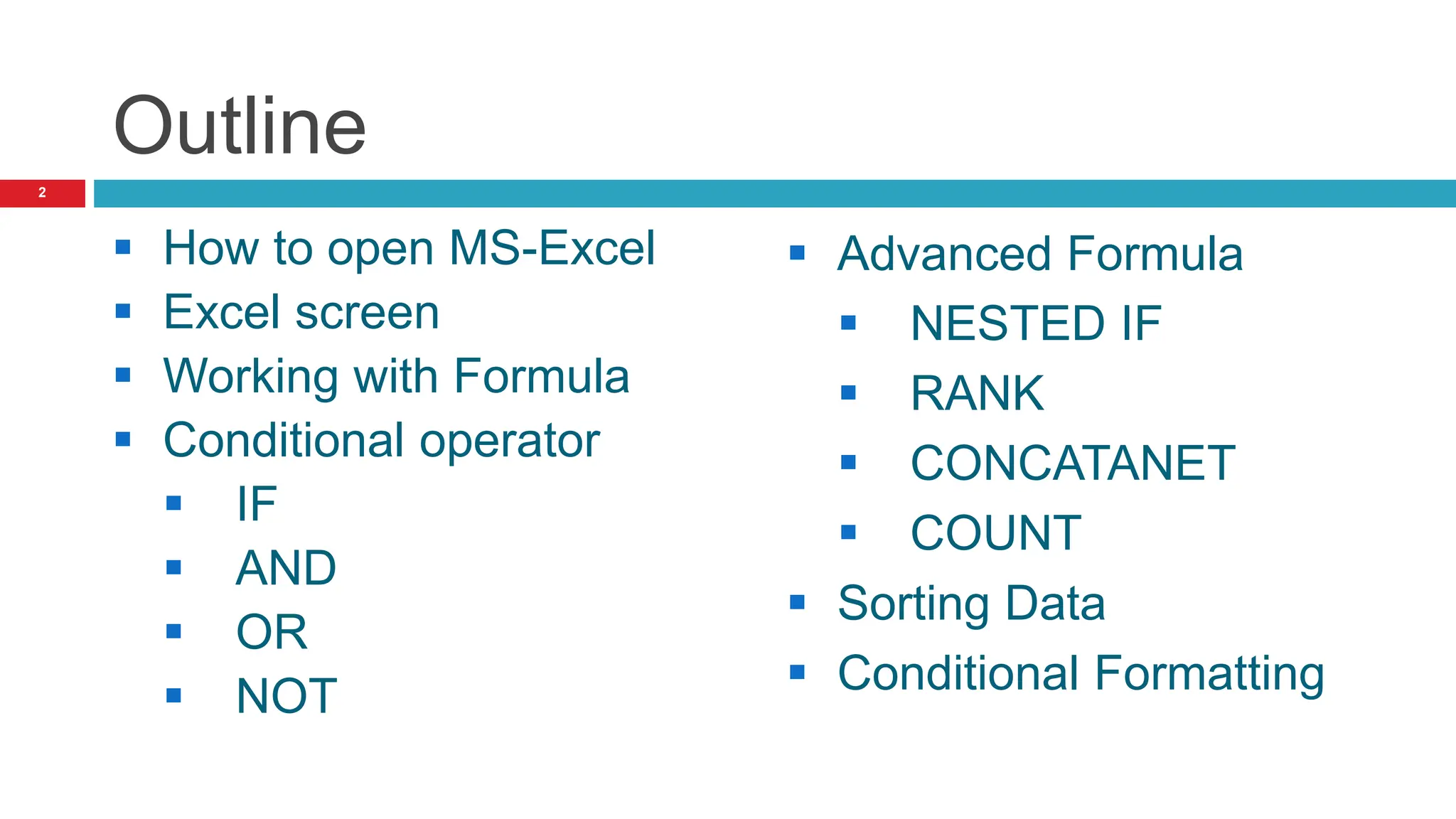The document provides an introduction and outline for a training on basic Microsoft Excel skills. It covers how to open Excel, an overview of the Excel screen and interface elements, working with formulas including common functions like IF, AND, OR, and NOT, more advanced formulas like nested IF and RANK, and other topics like sorting data and conditional formatting. The training is intended for graduate students at Mattu University for the class of 2023.










![Cont’d
11
Deleting unwanted data
While pointing to the cell you want to clear, click the [RIGHT] mouse button once.
From the pop-up menu that appears, select cut.
Working with blocks
Many commands and operations require that you work on more than one cell at a time.
While you may not require the entire worksheet, you may need to work on a Block of cells.
Every block of cells has a beginning and ending address.
The beginning address is the address of the cell in the top-left corner of the block whereas the
ending address is the cell in the lower-right.
Mouse shapes
thick cross, it can be used to select a single cell or block of cells for
editing purposes.
diagonal arrow, you can move the contents of the currently selected cell or block of cells to
another location within the worksheet.
thin cross-hair, you can fill a formula or other information into adjacent cells within the
worksheet.](https://image.slidesharecdn.com/msexcel-240226030902-2e188454/75/Introduction-to-micro-soft-Training-ms-Excel-ppt-11-2048.jpg)





















